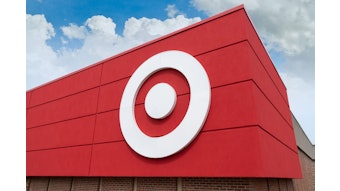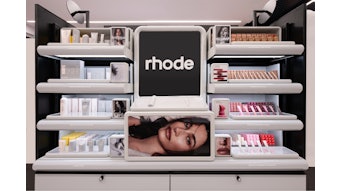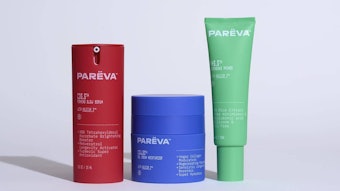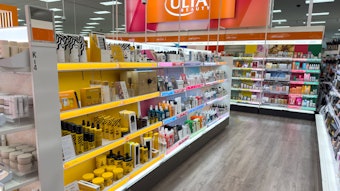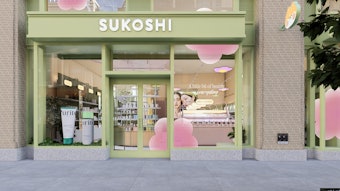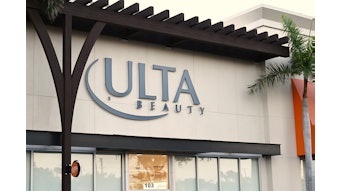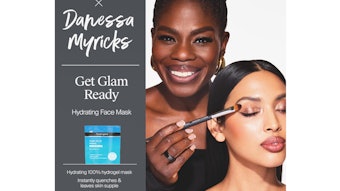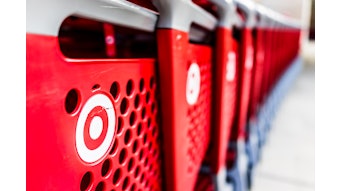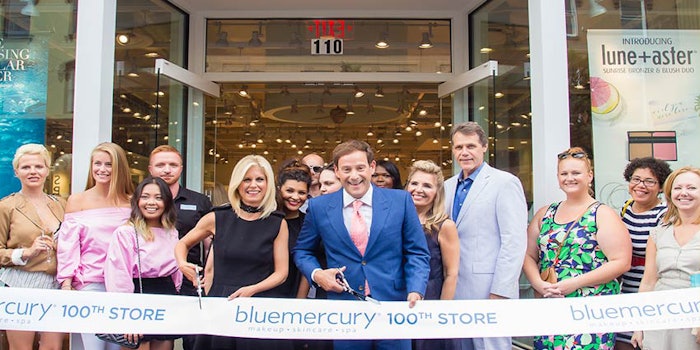
As Global Cosmetic Industry recently reported, Bluemercury has opened its 100th store in Savannah, Georgia, marking the retailer's foray into larger store formats.
The 2,400-square-foot site, at 110 West Broughton Street, features "a fresh and updated look," according to the company. The location features more than 70 brands, including Oribe, NARS, Hourglass, RMS, Tara Smith, This Works and Kiehl's.
The company is leveraging the shop-in-shop format to house a Jo Malone fragrance, cream and wash micro store, reflecting broader changes in the beauty retail space.
"Sixty percent of our clients are between the ages of 35 and 64."
To learn more about the retail innovator's plans and get a closer look at what's wroking in beauty retail, Global Cosmetic Industry spoke with Barry Beck, COO and cofounder of Bluemercury, providing deep insight into the state of Bluemercury, consumer trends and the broader industry.
GCI: You're reportedly opening as many as 40 stores through 2017. What's driving these physical store openings?
Barry Beck: With the founding of Bluemercury, we created the first national neighborhood beauty store, where customers could receive a personalized, educational, friendly shopping experience, along with an assortment of the world's most coveted luxury beauty brands.
We created a revolutionary retail concept—a store steps from your home, with friendly beauty experts that know everything about products and can advise clients on the right solutions to your beauty and skincare problems.
We also wanted a one-stop shop for all things beauty. We have always offered experiential services—makeup services, brow stylings, waxing, and facials so all of our clients’ beauty needs could be met in one place.
"Shopping for beauty can be a complicated and personal process and our beauty experts have become our enduring secret weapon."
We plan to open more stores in 2017 than ever before. One of our key innovations is our land and expand[ing] real estate strategy. We successfully cluster our stores in markets, which makes us unique among luxury retailers, effectively building a moat of convenience around our customers.
Our stores are located near where our clients live and work. In cities, our clients live within a five-mile radius. In the suburbs, within a 15-minute drive, door to door. We specifically target sites in busy, high-density neighborhoods which encourages visits with our best customers visiting us three to four times per month.
Our clustered stores benefit from established brand awareness. Rather than a cannibalization of sales, we actually see a lift to the overall business as the high density of nearby stores helps each new store ramp up even more quickly, and deliver even higher returns.
Our core client is educated, decisive, affluent and comfortable in her own skin. She may be a recent college graduate headed towards her thirties, a new mom, at the peak of her extremely successful career, or an empty nester.
She is a millenial, gen Y, gen X or a baby boomer—and we are even starting to get Gen Z!
Today, 17 years since the founding of Bluemercury, we still have aggressive store growth planned, and an ecommerce site growing at a supersonic pace.
Sixty percent of our clients are between the ages of 35 and 64. She is urban and suburban. She visits us a lot—she wants solutions to her beauty problems.
At Bluemercury, our business is thriving during this disruptive time in retail history, but in this digital age, clients today have more choices than ever. The customer today demands hyperpersonalization and hypercustomization in their shopping experience.
Today, 17 years since the founding of Bluemercury, we still have aggressive store growth planned, and an ecommerce site growing at a supersonic pace. We know exactly where we came from, and why we are different.
As we look toward the future, our approach always starts with our customer, anchored in providing her a better more engaging shopping experience. Bluemercury’s retail expansion will continue to enhance our core focus on that hyper-personalized customer experience.
"One of the most exciting new initiatives going on is our Jo Malone micro-stores inside of our stores of which we will be opening three this year."
Our mission was—and is—to be the best in the world at giving beauty advice. Shopping for beauty can be a complicated and personal process and our beauty experts have become our enduring secret weapon. They are the most knowledgeable in the industry.
There’s also continued emphasis on our services. We were rated by Oprah as one of the best facials in America and we’ve performed nearly 10,000,000 facials since our founding. Our spa staff are always available to our clients to provide stepped up advice or solutions right on the store floor.
"We are innovative product curators and cosmetic brand developers."
In addition, we are also heavy samplers and would rather have you leave with several products to try, rather than ever have a client leave with a product that is not right for them. We "embed" Bluemercury into our customers’ lives.
Out of mascara? They don't run to the drugstore or uptown to the luxury department stores, they run into Bluemercury, which is next to where they workout at Soul Cycle or Equinox and near their specialty grocery store like whole foods or Dean and Deluca.
GCI: Will they all be standalone or will there also be store-in-store concepts in the mix?
BB: One of the most exciting new initiatives going on is our Jo Malone micro-stores inside of our stores of which we will be opening three this year. They will feature an interactive shop-in-shop that allows clients to experience the beauty of Jo Malone's full range of fragrances, creams and washes.
"[R]etailers who consistently work to innovate and enhance the shopping experience will not only survive, but thrive, during this disruptive time in retail history."
GCI: Can you describe how the store formats/design have evolved in recent years?
BB: We are always innovating the way we do things, from our new mobile point of sale to the fact that we are rolling out our larger store format so that we can increase our selection and merchandise assortment.
Also, we’ve updated our interior to white fixtures for a cleaner, brighter look and will be rolling out open-sell color cosmetics to more of our stores. We have to continue to find the white space in retail; retailers who consistently work to innovate and enhance the shopping experience will not only survive, but thrive, during this disruptive time in retail history.
"An important product criteria for us is the search for an annuity SKU."
GCI: How important are small or up and coming brands for your product mix?
BB: We are innovative product curators and cosmetic brand developers. Our approach to product innovation revolves around several core concepts.
The first is newness. Why is new product innovation important? It is a winner-takes-all game. Last year, we launched thousands of SKUs, but only 17% were successful—taking 80% of the revenue.
This means approximately 83% of new launches failed to resonate with the consumer. Product proliferation is at a fever pitch. In April alone, we launched more than 20 new products per day. But it’s a double-edged sword. It is about the launching of smart, targeted, effective new products.
Also, new products drive traffic and brand building. It is the promise of something new to look at that drives customers into the store or onto your ecommerce site.
We see retail as personal and emotional and create and pick products and brands that strike a chord. We spend hours poring over our customer data before bringing in any new brand.
Unfortunately, it was never easy or linear. We always endeavor to be innovative curators and often look to our vendor partners to help promote creativity, but there have been wrinkles along the way. In 1999, our original vendor partners were entrepreneurs and experimental pioneers like us who we could partially look to for innovation.
"Our focus when creating our proprietary brand was to solve the unmet needs of our customers while at the same time, create as many annuity skus as possible."
Within 12 months, the landscape completely changed. The big four in the beauty industry decided to go on an acquisition binge. So instead of doing business with founders and owners, we were now in business with Estee Lauder, Shiseido, Loreal and LVMH.
So we added more indie brands—Laura Mercier, Frederic Fekkai, Ren and ReVive. And you know what happened then. More acquisitions.
Therefore, we are always on the hunt, scrutinizing the product landscape looking for interesting brands with a point of difference especially those with long innovation runways of their own.
An important product criteria for us is the search for an annuity SKU. What is an annuity SKU? An annuity SKU is a SKU that clients come in for year after year after year because they love it, it works and they cannot live without it.
"We are not afraid to collaborate with our vendor-partners early in the design process."
If you go for this goal, you are really creating consistent traffic and loyalty. Our customers were coming in asking for a highly effective, natural skin care brand that didn’t have harsh chemicals; the result was the development and creation of our own proprietary brand, M61 Powerful skin care, the most natural cosmeceutical brand in the beauty industry.
Our focus when creating our proprietary brand was to solve the unmet needs of our customers while, at the same time, creating as many annuity SKUs as possible. M61 has become a runaway cult brand success, containing many annuity SKUs and top sellers across our fleet.
You may recognize some of these other famous annuity SKUs such as Coca-Cola, Q-tips, Chapstick, Maybelline mascara, Chanel No. 5, YSL Touch Eclat, DDML and Laura Mercier Tinted moisturizer. But, remember, if you don't cannibalize your own annuity SKU, someone else will.
Also, an important product criteria is simply “love." We take an innovative mindset to our product merchandising and product creation. Our merchandising motto is "love is all we need," and this is our litmus test! If we love it, our clients will love it.
"One out of every five products we sell each day are new products that didn’t exist a year ago."
We are not afraid to collaborate with our vendor-partners early in the design process. Sure, You do trade off some confidentiality, but in exchange you get a deeper partnership and increase the likelihood of success.
Too often, we are told about a product within six months of its launch, after it has already been mis-named, or mis-priced or is not a need that we have. Our retail teams in the field know our clients and sell the products they love and know. We get involved early so that we can make sure our vendors are developing SKUs our clients will love.
For us, partnering with brands is a long-term relationship. We’re not looking for the latest trend that’s hot this year and gone the next. We want lasting, sustained quality.
Additionally, we tailor brands to each location, i.e.: Chantecaille is only carried in our new East Hampton location.
Also, innovation and ideas drive excitement, energy and engagement on the part of the consumer. 1 out of every 5 products we sell each day are new products that didn’t exist a year ago. 50% of the products we sell were created within the last 2 years. Innovation is the lifeblood of the beauty industry.
"A consumer may be inspired by Instagram, a print magazine, a friend, a Snapchat video, a YouTube haul or unboxing, QVC, HSN or Pinterest."
So what’s working today? What’s trending now? What does our client love?
- Travel treasures and portable sets that make her life easy. Every Trish McEvoy planner and every luxury skin care set that is value-oriented sells out quickly. Our client is time-starved, she travels a lot. She travels for work. She travels on vacation when she unplugs with her friends or family.
- Escapist giftables. Our consumer and her friends are cocooning. With Nextflix and Blue Apron at our fingertips, you can have great social experiences in the comfort of your own home. When she gives a gift or buys a home fragrance item, she wants it to evoke a journey or sense of place right from her home. Nest Ocean Mist Candle and home fragrance is a runaway success. So is Jo Malone’s Mimosa & Cardamom fragrance. Also, see Molton Brown Tobacco, Lafco Wine Room Candle and Bobbi Brown Beach.
- Instant, results-oriented skin care, especially multitaskers that don’t break the bank. Powerblast is a recently launched product in our own line, M61. This one-minute, foaming glycolic mask gives great exfoliation, is quick [and offers] escapist and fun to use.
- Sets that think for you so you don’t have to—eye palettes and brush sets. These save her time, solve her beauty problems and make it fun to shop.
- Hair, hair, hair, hair. “Becky with the good hair" is now a cultural phenomenon. Our client will try anything new in hair. She wants to preserve her color-treated hair. She wants to extend her blowouts. She wants the salt water look.
- Mascara, mascara and more mascara. Mascara is everywhere, and my kids are singing about it in Taylor Swift's song. Our client tries and uses more mascara then she ever has in the past. She will keep her trusty favorite, but also try anything new. She is keeping one in her office, in her gym bag, and multiples at her apartment or home.
- Portable coverage with SPF. I now officially predict the death of foundation in a jar. She wants her CCs, BBs and tinted moisturizers. Tubed products with coverage is one our fastest growing categories. She wants them with SPF and she wears them day and night, weekdays and weekends. Did you know the word "foundation" was taken from the “foundation” department where women used to buy girdles and undergarments at a department store? We don’t buy girdles anymore. We buy Spanx. Foundations in a jar will go the way of a girdle.
- The Uberization of makeup services. We have been doing makeup services for 17 years, and they are exploding at a pace we have not seen in the past. Our stores are booked with gen Z before prom, millennials for their weddings, and gen X before their charity events or evenings out.
Information gathering and transaction execution are no longer linear.
GCI: How is your customer changing? What trends are impacting their shopping behaviors?
BB: Today, there is excessive fragmentation in the entire purchase process for beauty. A consumer may be inspired by Instagram, a print magazine, a friend, a Snapchat video, a YouTube haul or unboxing, QVC, HSN or Pinterest. She may shop at one of thousands of online beauty sites, pop into a beauty store, pick up something at the airport or at her favorite clothing retailer.
Information gathering and transaction execution are no longer linear. And, in any industry where there is chaos—when the existing value networks are breaking down—there is opportunity to enter and create real and lasting value.
The market is wide open for new innovators and new innovation. Now is the time to create something new. The pace of change in the beauty industry is faster than it has ever been.
While we are slamming into a new era with seismic shifts in customer behavior, the death of the retail store is greatly exaggerated.
We are entering new territory together. The pace of change in the beauty industry is faster than it has ever been and accelerating at warp speed. Generation Z, the future beauty consumers, have fingers that move faster than the speed of light. They learned from Instagram how to click between images and SKUs in ¼ second increments.
While we are slamming into a new era with seismic shifts in customer behavior, the death of the retail store is greatly exaggerated. So many pure play digital businesses, such as Ebay, Google, Warby Parker and Amazon.com, are opening retail stores because it’s nearly impossible to actualize your brand without having a physical world presence.
According to Google themselves, while eight out of 10 customers research online prior to purchasing, 51% of these same customers actually buy in-store. In fact, we predict that the retail store will never go away. Only 6% of cosmetics sales have gone online.
"[R]etailers are trying to answer the difficult question of 'how are these customers going to behave in the future?'”
However, we will see the [physical] store change more in the next 10 years than it has in the last 1,000 years. There’s a tidal wave coming!
For the first time in history, there are more than 1 billion people under the age of 18. When I have questions about the future, I don’t look to my chief technology officer; I actually look to my child technology officer, [my daughter]. If she were running Bluemercury today, what would she be doing differently?
When my daughter was five years old, I gave her my mobile phone, possibly the world’s most affordable baby sitter. But this started to reprogram the way she saw the world, and we are at the very beginning of how this will effect a new generation of digital natives as they grow up, get their content and start making shopping decisions of their own.
"People are inherently social beings who need interaction and love to be connected to each other."
At the heart of this, retailers are trying to answer the difficult question of “how are these customers going to behave in the future?” That answer will be created by changes in human behavior, not just technology.
People are inherently social beings who need interaction and love to be connected to each other. So, maybe we are asking the wrong questions of the wrong people. Rather than turning to scientists and technologists, maybe we should turn to virologists and anthropologists.
As we look towards the future, Bluemercury’s approach always starts with our customer, anchored in providing her a better, more engaging shopping experience. So let me take you through the founding of Bluemercury, our business model, and where our key innovations and differentiators came from in the early years.
So, when considering what’s next and the future of retail, the biggest worry of everyone in this room should be about their business being Uber'd—completely disrupted by customer behavior trends you were not aware of.
"Traditional marketing will completely decline and the gap will be filled by social networking which will be integrated into virtually every step in the buying journey."
Today, we use our phone while standing on the street to tell a perfect stranger our exact location so he can pick us up. Isn’t this everything your mother warned you about? If you are using Uber, even you've been disrupted.
Looking through this lens, we are always watchful for these transformative trends that could create new categories and disrupt the current value chain. As our customer recalibrates almost every expectation, here are the five big opportunities I see in the future:
1. Social media shopping will gain even more momentum as people become increasingly connected during the purchase process. Imagine shopping for a lipstick at Bluemercury where all the mirrors are alive and you can get real time opinions from friends and family on your selection. This gives a whole new meaning to the “term peer pressure."
What about a store where people are beaming likes directly from Facebook right to our cosmetic store shelves? Two years ago, 75% of beauty customers said their behavior was influenced by marketing, while today, only 25% are influenced. Traditional marketing will completely decline, and the gap will be filled by social networking, which will be integrated into virtually every step in the buying journey.
We have all seen teenagers who buy cosmetics online and then show their haul on Youtube. These haul blogger sites have gone from social networking to serious commerce with millions watching. Beauty bloggers feel so much more genuine than million-dollar ad campaigns, [so] that brands will give them free product, like professional athlete endorsements.
"The average attention span of a human being is eight seconds."
In fact, we see that YouTubers were the most influential figures on informing our customers what makeup to buy, eclipsing A-listers like Gwyneth Paltrow. Retailers must actively engage in this global conversation, or their customers will simply begin the conversations without them.
"The former role of media was to tell a brand story, create interest and drive traffic"
2. Speed will become increasingly important. The average attention span of a human being is eight seconds. The average attention span of a goldfish is actually nine seconds. In this on-demand economy, the customer will require her beauty products now, regardless of where she lives.
Advanced robotics such as drone delivery could be reality in five years, facilitating same day delivery to a greater segment of even the most remote customers. At Bluemercury, our dense network of neighborhood stores will act as a last mile distribution hub.
In the future, automatic product suggestions based on past behaviors will be shipped to a nearby store before our customer orders it, or perhaps even before she knows she wants it, to make sure that if she does order it, we can get it to her inside the hour.
"The reciprocal is that store will transition to become an important form of branding, customer relationship [building] and even [as an] edutainment vehicle."
3. We see a complete role reversal where media will become the store and the store will become the media. The former role of media was to tell a brand story, create interest and drive traffic.
For example, ads would say, “go to Bluemercury, our M61 Powerful Skincare Products are there.” Today, you can buy cosmetics from any page of a magazine. They’re not even ads anymore, they’re actually the store.
The reciprocal is that store will transition to become an important form of branding, customer relationship [building] and even [as an] edutainment vehicle. At Bluemercury, customers come in for skin care education, world-famous treatments and our on-the-go XBar makeovers.
Our customers using these services shop with us more frequently and have higher average purchases. Creating rich in-store brand experiences and strong emotional connections will drive increased purchase across all channels, including digital.
"Connecting the dots that drive online purchasing will transfer to the physical world."
4. Big data analysis and the internet of everything will transform the way retailers measure their success. Connecting the dots that drive online purchasing will transfer to the physical world.
Stores will use different customer metrics [that look] more like the web, such as how many impressions, what was the bounce rate, how many abandoned shopping carts and what did they touch? Best-in-class operators will even collect data on where you browsed before you shopped and where you navigated to afterwards.
At Bluemercury, we use our point of sale to capture and analyze millions of golden nuggets about our customers. The analysis of these data points helps us in many ways, including marrying targeted sampling to customers whose preferences we are intimately familiar with.
Retailers who don’t relentlessly mine and analyze this data render their point of sale to glass hammers with essentially empty calorie transactions.
"Repeat sales will lead to even more loyalty and more frequent visits."
5. Densification will lead to localization as the world population grows from 6 billion to 9 billion people. On a recent Miami market tour, I was stunned at how long it took to just get from Coconut Grove to Coral Gables; imagine a 30% increase in Miami traffic alone.
Intense clustering of customers will drive neighborhood shopping due to perceived convenience and a desire for social connectivity and community. Clients will transact multiple times daily where they live their lives, buy coffee and go grocery shopping. Repeat sales will lead to even more loyalty and more frequent visits.
Over time, the smart retailers will realize that physical stores are their most powerful asset. But only those who are able to provide fascinating store experiences and harness the changes in customer behavior will survive, and even thrive, during this disruptive time in retail history. At Bluemercury, we are ready and optimistic about the future.
"We have always been disruptors..."
GCI: How does digital figure into your retail mix? How important is omnichannel to Bluemercury?
We have always been disruptors, first we disrupted the luxury beauty channel and now we will use technology to do it again. We are now on to mobile technology, which is the start of the roll out of our omnichannel capability, which will include [the ability to] reserve online [and] pick up in-store, [the ability to] pre-order, replenishment and subscription, and a new revolutionary loyalty program and corresponding app.
We plan to have omnichannel beauty everywhere, where clients can get products and advice from Bluemercury 24/7, and we are agnostic about what time of day or which channel she is coming from.
